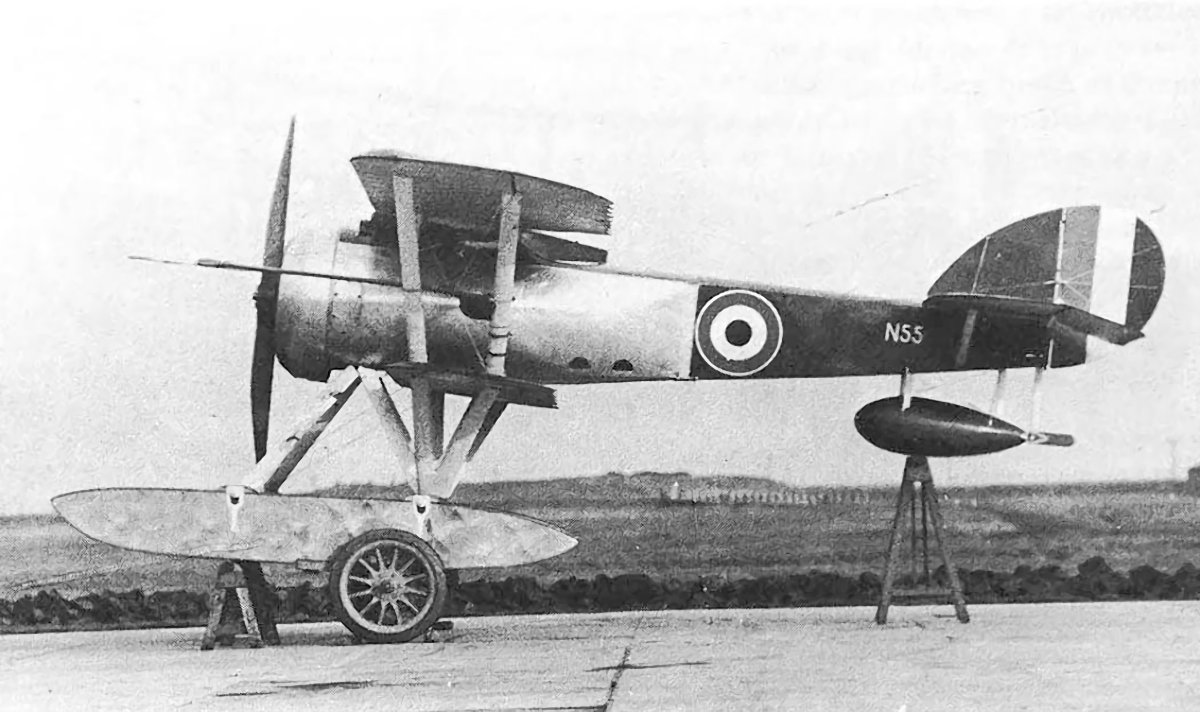Port Victoria P.V.9
In mid-1917, the RNAS Marine Experimental Aircraft Depot at Port Victoria on the Isle of Grain was instructed to build a new single-seat floatplane fighter as a possible replacement for the Royal Naval Air Service (RNAS)’s Sopwith Babies. The new aircraft was to combine the good manoeuvrability and pilot view of Port Victoria’s earlier P.V.2 floatplane with superior speed.
Like the P.V.2, the new design, the Port Victoria P.V.9 was a single-engined sesquiplane braced with faired steel tubes. The fuselage, wider than that of the P.V.2, was mounted between the upper and lower wings, almost filling the inter-wing gap, giving an excellent view for the pilot. Armament was a Vickers machine gun synchronised to fire through the propeller disc, with a Lewis gun mounted above the upper wing firing over the propeller. Power was provided by a Bentley BR1 rotary engine. While the designers had hoped to use the same high-lift aerofoil section as used in the P.V.2, this was rejected by the Admiralty, who demanded the use of the more conventional RAF 15 aerofoil, which resulted in a larger aircraft with a reduced climb rate and ceiling.
The P.V.9 made its maiden flight in December 1917, but trials were delayed by engine troubles and by a collision of the aircraft with a barge, which resulted in a propeller not matched properly to the aircraft being fitted, further reducing performance. Despite this, when the P.V.9 was officially tested in May 1918, the P.V.9 was said to be the best seaplane fighter tested up to that time. No production followed, however, as the availability of Sopwith Pup and Camel landplanes which could operate from platforms aboard ships, removed the requirement for a floatplane fighter.
Port Victoria Marine Experimental Aircraft Depot
The British Royal Naval Air Service established an R.N. Aeroplane Repair Depot on the Isle of Grain on the River Medway Estuary in Kent in early 1915. As there was already a RNAS seaplane base on the Isle of Grain, the Depot was named Port Victoria, after the nearby railway station. It became the Marine Aircraft Experimental Depot.
It was renamed Marine and Armament Experimental Establishment on 16 March 1920 in recognition of the fact that weapons and other equipment were evaluated as well as complete aircraft. It was renamed again on 1 March 1924 to the Marine Aircraft Experimental Establishment and eventually moved to Felixstowe.





